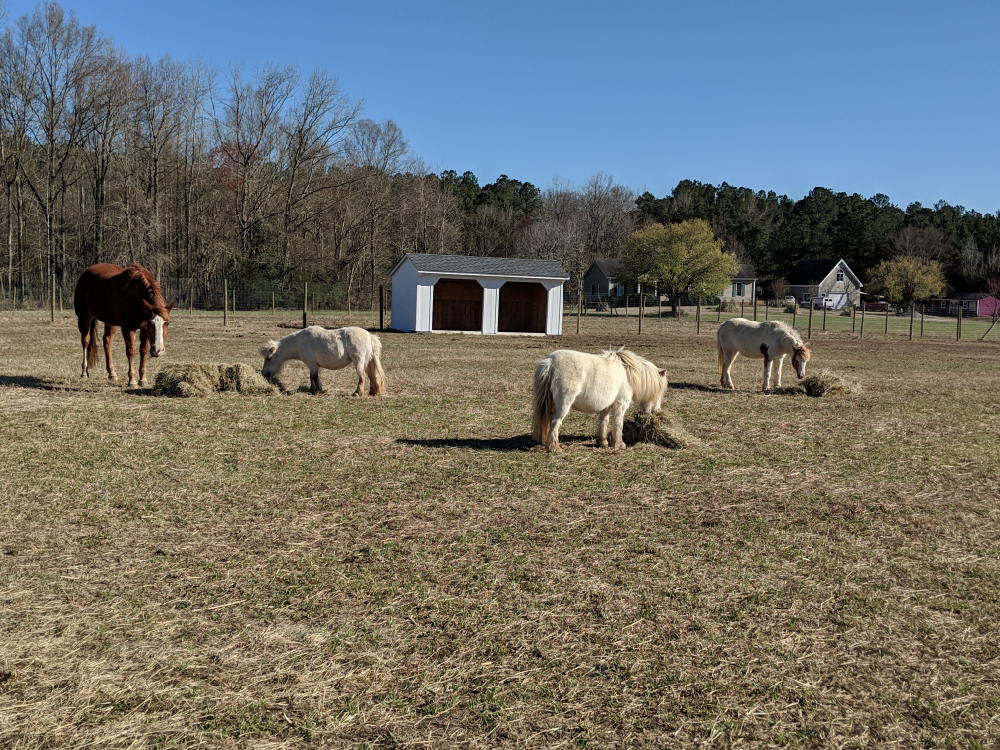I’ve Bought The Land. Now What?
By Nikki Alvin-Smith

The temptation to buy land and develop your own homestead or horse facility is ever present in the world of climbing property pricing and the lack of availability of rural lifestyle living quarters that fit your individual bill.
Navigating the jigsaw that is land development is a huge project and not one to be undertaken lightly. Attributes you’ll need to either already have or quickly master include the ability to manage a budget; decision making prowess; be well organized; strong multi-tasking capacity; and be able to liaise and importantly manage with various entities that include government officials and individuals that specialize in specific construction tasks. Sounds like a job advertisement doesn’t it? Well, it is. More than just a General Contractor who oversees a construction project and gets all the people in place on the right schedule and balances (hopefully) the budget and pricing in the process, the task of developing your own piece of property into a workable horse farm or homestead is not one for the faint-hearted.
That being said, there are some logical steps that are simple to learn as basic tenets for a successful process. Here we go!
Before You Bought
Before buying any property doing some due diligence is critical especially if you are not taking a mortgage to fund the purchase. With no bank and their specific requirements such as surveys, title searches and title insurance before buying, the cash purchaser can quickly become undone by not expensing on these costs independently.
In rural areas many properties are sold ‘as is,’ with quit claim deeds and no survey. Unfortunately, without taking specific legal advice on real estate purchase, which is recommended, the resulting issues that can arise with neighbors, property lines and land use can be more than just a headache. They can cost a lot of money in legal fees and survey expenses to address down the road.
Land often comes with a list of specific uses and restrictions on the deed. These may include conservation easements, right of ways/easements, development easements, areas of restriction due to Department of Conservation restraints such as watershed areas or protected wetlands or stream beds, restrictions on specific construction methods such as dwelling or abodes being placed on site without foundations such as cabins on loose rock pilings or double wide trailers or campers, and the list goes on.
For land that is currently free of any existing dwelling there is also the question of septic installations that will require percolation testing, and wells or other services access that will be required. And don’t forget the all-important availability at the site of internet carriers or satellite services for media. Unless of course you plan off-grid living (although even that is subject to restrictions in certain areas).
A property without a current survey also is most likely less land than stated. The terms ‘on or about’ so many acres are often disputed by neighbors that have an established provenance over adjacent lands. Prescribed right of ways can exist that you may be blissfully unaware of at time of purchase.
A title company that does a full search of the property and matches the identifying points on land divisions that go back to patents issued by royalty back in the day can then issue (if requested and paid for) an insurance policy to the property owner. This can guarantee the accuracy of their work in case of dispute and can be a worthwhile investment. The insurance company will fully back the property owner in case of disputes, saving the property owner thousands of dollars in legal fees and survey expenses with their army of professionals in the field. It is rare that a title company makes a mistake.
Hopefully these essentials are in place, and you have paid for a surveyor to identify the existing survey pins, monuments, or markers as being accurately placed to match the deed documents based on the current position of magnetic North in association with the dates of the prior validated surveys. Thus, you will know exactly where your property lies and where you are able to site your structures, services, and driveways without issues in the future subject of course to any local, State or Federal building zone requirements or restrictions.
Roughing In Your Plans
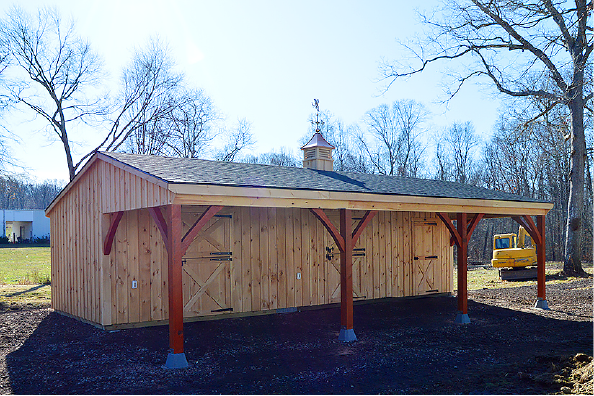
The first thing you’ll need to determine for your land purchase is how it will be accessed. Roughed in driveways may be subject to approval by the local town and/or county, so start there. Distances to property boundaries, blind corners or hills and similar issues need to be addressed before you hire the excavating team to go to work implementing their placement.
Be aware it is your job not that of the contractor to ensure permits for such locations are in place and that approvals have been granted. This is not something you want to have to move later.
You should map out your entire site plan and include where all services accesses will be placed whether underground or aerial obviously based on where you plan to build your house, barn, fencing, storage structures, garage, and garden areas. The necessary testing for water, septic percolations and well siting and distances etc. all factor into the placement of each component. Their interdependency should not be overlooked.
Be Concerned About Security
During the construction phase of your property development is pays to give some attention to how you plan to secure the site and the valuable materials during the building process. With modular builds this is rarely an issue and prefabricated and modular methods offer this and many other sincere advantages over stick-built or pole built on site construction. But in any event, keeping your property out of bounds to nefarious visitors is a good idea.
Consider a multi-pronged approach. Options include physical barriers such as farm gates with passcode locks that can be shared with those necessary or padlocks, temporary fencing or large rock barriers, no trespassing signage, remote CCTV or field cameras, solar powered alarms, and motion detection lighting.
You can also ask friendly neighbors to keep a watch on the comings and goings to the property on your behalf, and/or arrange to live on site in temporary quarters for the duration of the build in a camper or RV.
Order Of Go
A good rule is to start with the toughest thing first. Given the land does not need clearing beforehand and is already open and accessible, the toughest thing may be the hardest thing to obtain or the item that will take the longest time to get approval to execute.
Some examples: if your property is located in a city watershed area and you need a septic, begin by seeking site approval for that item; if your area is suburban and keeping horses in your backyard is the dream, then address any restrictions on how many horses per acre you are allowed and how they may be managed including manure management; if you want a three story house make sure it falls within the parameters of the site guidelines and viewing and light rights with neighbors; if you want to build multiple dwellings on the property ensure that there are no variances needed that might later restrict your ability to develop; if planning permit issuance in the neighborhood is subject to long wait times start the process early.
Common sense goes a long way in the decision-making process. Don’t assume because you’ve built something somewhere else before that the new landscape, neighbors and neighborhood is the same, even if it is sited in the same township. Laws and restrictions change, neighborhoods evolve and the people in them change from folks that are established rural communities to new housing developments with urban dwellers unused to the smells of manure, noise of chickens or livestock or tractor traffic.
Part of the permission process will likely be the requirement to provide detailed plans certified by a licensed engineer of the actual building, especially for a house or living abode that will be heated and have water access, and the site details of where it is to be placed based on a survey.
Once you have established that the site is buildable, then selection of an architect or engineer to design the plans may be your next step. These professionals can help you by recommending site excavation companies, general contractors, or construction firms in the area that they have worked with before. However, there are ways to speed up the building process.
Simple Ways To Speed Up The Building Process
The use of modular structures for homes and horse barns, storage structures, and garages is a very popular choice for the property owner that doesn’t want the hassle and extensive wait times of a traditional build. Plus, prefabricated sheds, kennels and chicken coops can arrive almost instantly and can be bought online with ease.
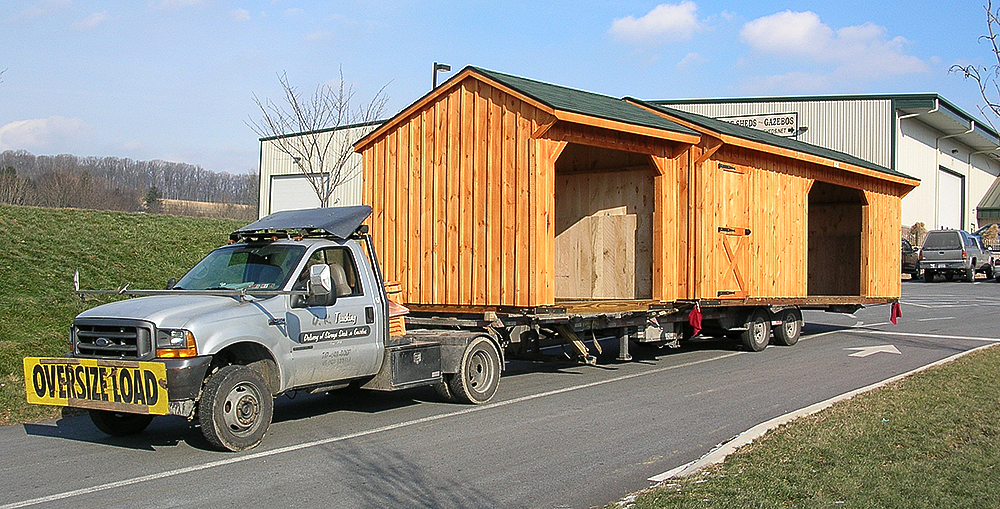
There is usually some site preparation required even for shed or smaller structures. A minimal requirement of a level site is common for smaller structures and of course access for the delivery equipment is a must but for larger projects concrete work will be needed. Don’t forget to factor in the need for drainage for all construction whether it be a driveway or a building.
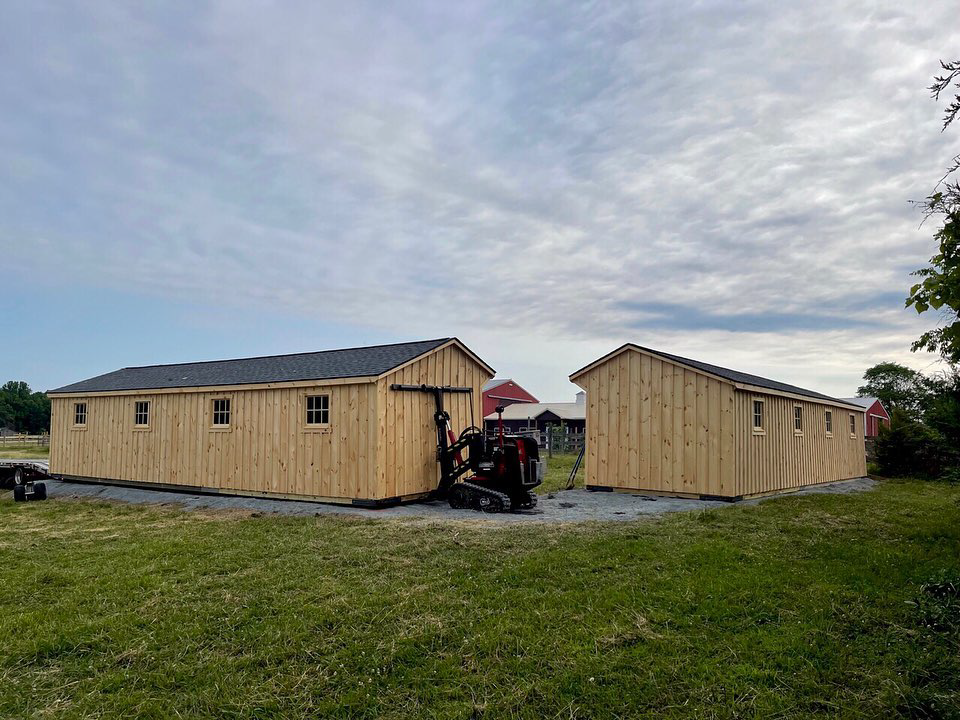
It is often surprising to homeowners the method that smaller modular or prefabricated structures can be delivered, placed, and set up. While larger builds may require a crane and a crew, many smaller builds can be set in place by one person using a ‘mule’. An automated remote device that is designed to lift, carry, and place the structure and it has the ability to navigate with ease tight corners and small or awkward spaces. It is a remarkable unit and when combined with an experienced operator is amazing to watch in action.
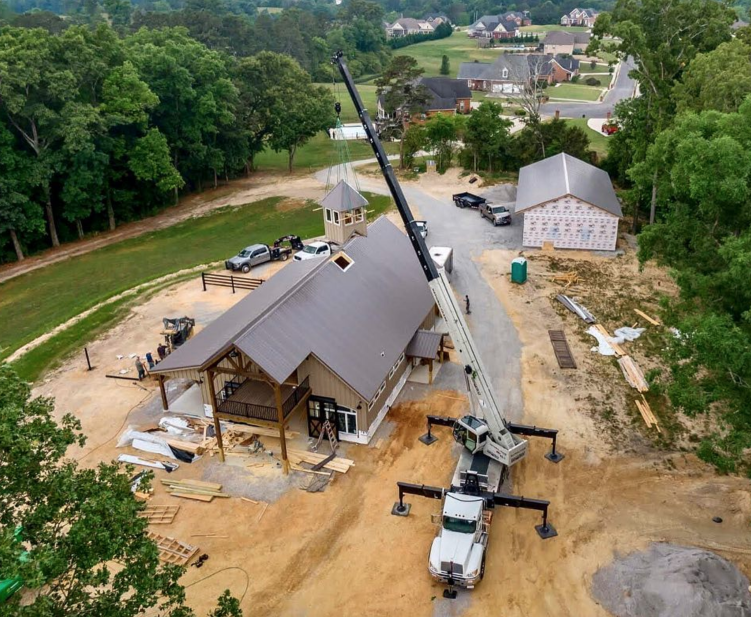
Larger modular structures may require some foundation. Concrete pillars to support the weight of the posts that support the frame and roof of the structure, or a full concrete slab may need to be poured and for a home of course a basement may be wanted.
The great thing is that large modular construction companies can provide the property owner with full sets of engineered plans for permits, help with all aspects of the build including working with your site excavation team (or even provide one in certain areas) and design and offer solutions to issues that might arise during the process.
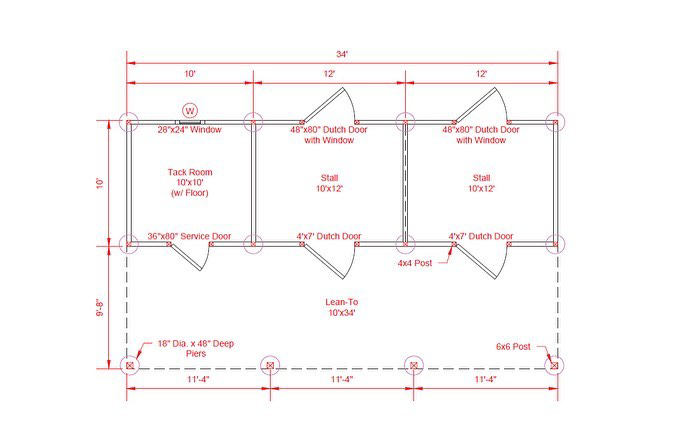
Of course, choosing the right company to work with is important. So due diligence here checking out testimonials and reviews, reading warranties and sample contracts and defining a ‘to the penny’ quote for the purchase that includes the structure plus freight and set up is essential.
Build It With Style
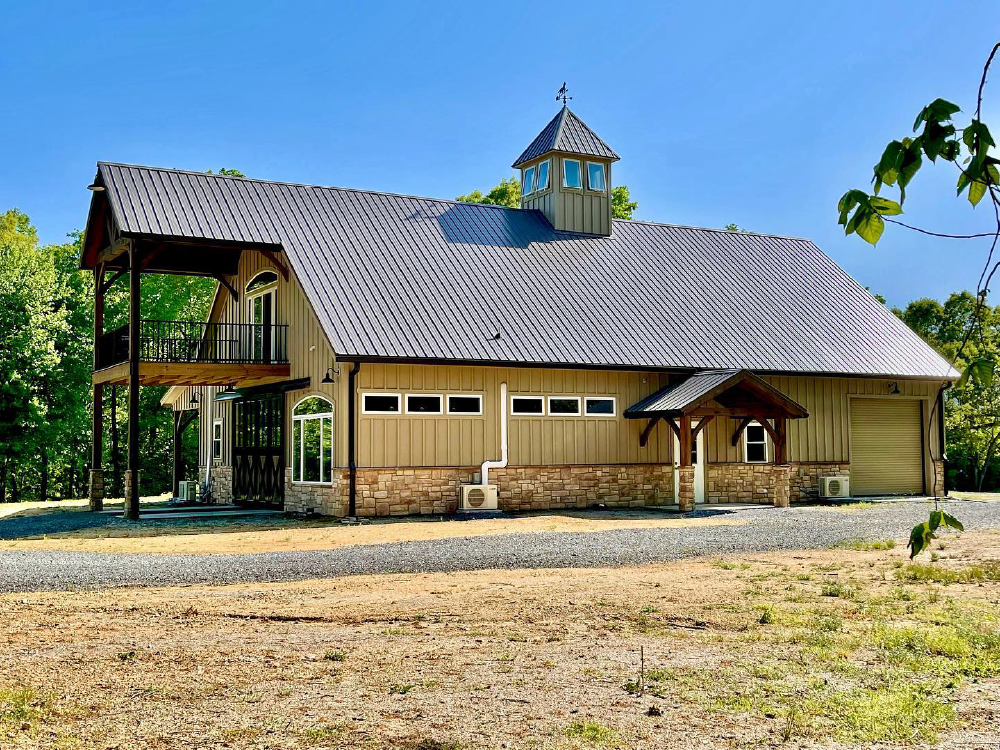
The better the choice of options you have for the structures you plan to build on the property the more likely it is you will be thrilled with the result. Inspiration from ‘project showcases’and 3D renderings can be very helpful in ensuring you make the right decision for you.
When it comes to construction outside of the house build itself, you may opt for something in-keeping with the existing architecture of the neighborhood or opt for something completely different. The other structures on the property should complement each other and the house itself both in style, size, and colors. This will offer a pleasing aesthetic and indicate the ‘belonging’ of each building to the main house.
Lay out of larger projects such as horse facilities opens many possibilities for site development. Placement of the main barn in the center of the property with paddocks placed around it is a popular choice as it minimizes the ‘to and fro’ of turnout for the horses. But the geography and geology, topography of the site will all factor in to exactly where each component is placed.
Wind directions, water and drainage flows and soil types all matter in building. Doing a bit of homework by researching a good resource such as a blog site that offers experienced advice is a good start to better understanding your options.
Bottom Line
The hardest thing in any construction project is without question staying on budget and financing the spend. You don’t want to get involved in spending more than you should and be forced to either suspend, halt, or even foreclose on your project before or immediately after it reaches fruition.
Avoid getting wrapped up in small issues and look at the big picture. Ensure that all work that is to be completed is done by qualified, licensed, and insured personnel and get everything in writing with a timeline established on the document. At all costs avoid the ubiquitous ‘time and material’ quotes for work as these ‘open-spended’ contracts rarely serve the buyer well.
Be realistic about your property development not just with finding financing options where possible that make sense and choosing good companies to work with, but also about how long the process will take. It is always longer than you think.
Plan well ahead for housing needs for your existing 2-and 4-legged families if you are moving house or barn. Some simple fixes that can save you much money on unnecessary boarding bills for your horses might include installation of a few paddocks with run-in sheds to serve as temporary living for the horses now that can be fully utilized down the road too. For housing needs you may consider an RV or camper on site, or a local long term rental home.
